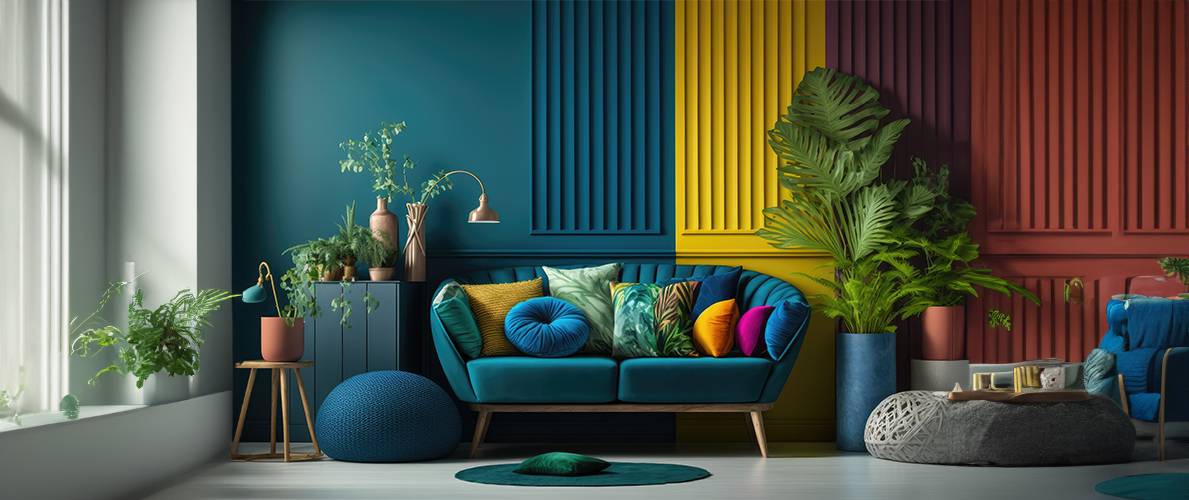Consult an innovative Architecture Firm for cutting-edge and creative designs.
Consult an innovative Architecture Firm for cutting-edge and creative designs.
Blog Article
Transform Your Home With Vital Principles of Interior Decoration and Looks
By recognizing the impact of shade theory and the relevance of texture and patterns, one can create rooms that are not just visually attractive but likewise deeply individual. Attaining this stability includes more than simple design; it incorporates a calculated arrangement and a keen understanding of exactly how each element interacts within a space.
Understanding Color Theory
Color theory is an essential aspect of interior layout that dramatically affects state of mind, assumption, and general visual. Understanding the concepts of shade theory enables designers to produce spaces that resonate mentally with owners while satisfying practical demands (interior design firms). Colors can be classified right into 3 primary types: key, secondary, and tertiary. Each group plays a critical role in developing consistency within a room.
The psychological effect of colors is profound; warm hues such as reds and oranges stimulate power and heat, while great tones like blues and environment-friendlies promote calmness and peace. The usage of corresponding shades enhances visual rate of interest, developing striking contrasts that can raise a room's allure.
Neutral colors, on the other hand, serve as a flexible backdrop, allowing various other layout aspects to beam. It is important to consider elements such as illumination and the space's purpose when picking a color combination, as these can modify the assumption of shades throughout the day.
Ultimately, a well-considered shade scheme can change a space, cultivating a sense of comfort and design that straightens with the inhabitants' choices. Mastery of color theory is, as a result, an essential ability for any indoor developer aiming to produce unified and welcoming environments.
Achieving Equilibrium in Design
Exactly how can developers achieve a sense of stability in their spaces? Accomplishing balance in layout is fundamental to creating unified interiors.
Unbalanced equilibrium, on the various other hand, depends on varying components that still attain a cohesive appearance. This method enables even more dynamic and casual arrangements, giving passion while preserving stability. By thoroughly picking varying dimensions, colors, and appearances, developers can produce a visually compelling space that feels well balanced yet energetic.
Radial equilibrium highlights a main focal point with components emitting outside. This style is commonly seen in round designs, where furniture and style create a cohesive border that attracts the eye internal.
Ultimately, accomplishing equilibrium needs thoughtful consideration of range, percentage, and the partnerships between elements. interior design firms. By skillfully using these equilibrium concepts, designers can change spaces right into atmospheres that really feel both aesthetically pleasing and functionally unified, boosting the overall experience for residents
Significance of Spatial Recognition

An eager sense of spatial recognition permits designers to determine centerpieces within an area, guiding the customer's interest to crucial features while preserving an overall sense of unity. It additionally aids in the strategic placement of lights, which can substantially influence the assumption of space and mood. Understanding spatial partnerships makes it possible for the developer to cater to the details requirements of residents, ensuring that each area serves its intended objective without endangering aesthetic appeals.
Ultimately, spatial awareness is essential for taking full advantage of the potential of any indoor area. By carefully considering the interaction in between measurements, design, and function, developers can produce atmospheres that not just fulfill sensible requirements yet also evoke a feeling of comfort and beauty, boosting the general living experience.
Including Texture and Patterns
Welcoming a varied series of structures and patterns can substantially boost the visual and tactile charm of an indoor space. The strategic use different products-- such as wood, steel, fabric, and rock-- produces deepness and interest, making a space really feel extra inviting and vibrant. Incorporating smooth surface areas with rough textures can establish an equilibrium that attracts the eye and engages the senses.
When incorporating patterns, consider both range and rep. Large patterns can offer visit this web-site as focal factors, while smaller, refined designs can complement various other aspects without frustrating the room. Layering patterns, such as pairing floral paddings with candy striped throws, adds complexity and a sense of harmony if performed thoughtfully.
It is likewise essential to preserve a natural color scheme, ensuring that structures and patterns work together as opposed to contend for attention. By picking a few vital structures and patterns, you can produce a linked aesthetic that shows your individual design while boosting the general ambiance of the space. Eventually, the mindful incorporation of these aspects can change a mundane area right into an advanced atmosphere abundant with personality and warmth.
Personalizing Your Space
Developing a room that shows your character is important to achieving a genuinely welcoming environment. Customization in interior decoration permits you to instill your one-of-a-kind style and interests right into your home, transforming it from a simple sanctuary right into a sanctuary that speaks with who you are. Begin by selecting a shade scheme that resonates with your emotions-- vibrant tones can invigorate, while soft tones use peace.
Include artwork and style that reflect your passions, whether it be traveling, nature, or abstract principles. Showing individual collections, such as books, photos, or keepsakes, can evoke treasured memories and More about the author create prime focus within an area. In addition, consider tailoring useful items, like upholstered furniture, to straighten with your aesthetic choices.

Verdict
To conclude, the transformation of a home via the crucial principles of interior decoration and appearance demands a comprehensive understanding of shade theory, balance, spatial understanding, texture, and personalization. Each element contributes dramatically to producing an unified visit the site and useful living environment - miami interior design. By thoughtfully integrating these concepts, people can enhance the visual allure and psychological resonance of their areas, eventually cultivating a home that shows unique identifications while supplying comfort and practicality
Report this page